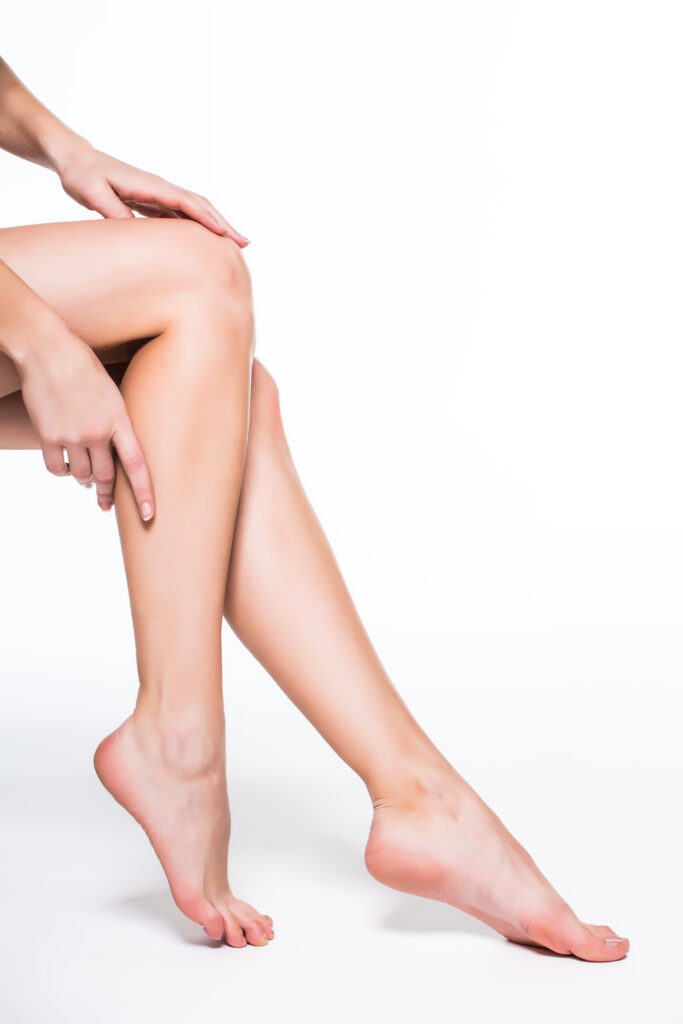

On average, women dedicate nearly two months of their lives and spend over $10,000 managing unwanted hair. For those opting for monthly or bi-monthly waxing, the lifetime expenditure can soar to over $23,000. Laser hair removal treatments are a cost-effective, permanent hair removal solution suitable for all skin types, offering substantial long-term results compared to traditional hair removal methods.
Laser hair removal is a cutting-edge procedure that uses laser technology to achieve permanent hair reduction. Modern laser treatments can effectively prevent further hair growth by targeting and disrupting the hair follicles using intense laser light. Botox Montreal offers the most effective laser hair removal treatment on the market to its patients for optimal results.

Modern laser hair removal systems are safe and effective, making them a popular treatment option among all kinds of people. However, patients with dark hair and light skin typically benefit the most from laser hair treatment.
Dark skin acts as a filter for the hair removal laser, preventing hair removal devices from acting to their full capacity. Nonetheless, patients with dark skin can still enjoy the full benefits of laser hair removal, including softer skin, after multiple treatment sessions.
Laser hair removal provides permanent hair reduction by targeting hair follicles to prevent regrowth. Performed by experienced technicians, it is a safe and effective treatment for various skin types and hair types. Key benefits include:
During a laser hair removal session, a technician uses a precise handpiece to deliver light energy, targeting hair follicles to reduce unwanted hair. Sessions last from a few minutes to an hour, depending on the treatment area and hair density. While mild discomfort is possible, often described as a rubber band snapping against the skin, this fades quickly thanks to a cooling system for added comfort.
Here’s what to expect:


Laser hair removal treatments can target most areas of the body, except the eyebrows and eyelashes. Commonly treated areas include:
While effective for most skin types and hair types, finer or light hair may require more sessions due to less pigment to absorb the laser’s light energy. Darker hair responds faster, often needing fewer laser hair removal sessions.
Our expert technicians use advanced laser hair removal technology to create tailored treatment plans, ensuring comfort and optimal results.
While the vast majority of patients can enjoy the full benefits of this effective treatment without restrictions, those with the following conditions should abstain from laser hair removal:
If you’re taking Accutane, it is better to wait 6 months before treatment.
Skin covered with decorative tattoos, permanent make-up, or write-off tattoos can’t be treated
Patients with a history of photosensitivity to light of 755 nm or 1064 should abstain.
Patients who exhibit a history of light-triggered seizures should avoid laser hair removal.
Medications such as blood thinners, iron supplements, and herbal supplements including ginkgo, ginseng, and garlic place patients at a higher risk.
Patients taking drugs to induce photosensitivity in or above 755 nm or 1064 nm should abstain.
If one or more active lesions are present in the intended treatment area, then patients should avoid laser hair removal. Patients should start prophylaxis before treatment, as prescribed by a medical doctor.
Candidates should be evaluated by a licensed health professional for medical clearance.
Open wounds and skin that is actively infected should not undergo laser hair removal.
Patients with Raynaud’s phenomenon require an extra level of care.
Testing should be performed before treatment.
Patients with cardiac pacemakers, cardioverters, and similar implantable devices will require a doctor’s approval before treatment.
Using laser hair removal technology on recently tanned skin can result in blisters, hyperpigmentation, or hyperpigmentation. It is better to wait for the tan to fade before commencing treatment.


Laser hair removal treatments are generally safe but may involve potential side effects depending on your skin type and hair type. Common risks include:
Pigmentation changes can appear 1-2 weeks after treatment and may last for months. If such effects occur, it’s best to discontinue treatment, regardless of skin color.
The cost of laser hair removal depends on factors like the treatment area, number of sessions, and the clinic’s pricing. Smaller areas, like the upper lip, are more affordable, while larger areas, such as the legs or full body, cost more due to increased time and resources.
Key factors influencing cost include:
No, laser hair removal does not cause cancer. The lasers used in this procedure are specifically designed to target hair follicles beneath the skin’s surface, using controlled light energy to disrupt hair growth. This light does not penetrate deep enough to affect other tissues or organs.
The technology is safe and has been approved by medical professionals for permanent hair reduction. While there may be minor side effects like redness or irritation, these are temporary and not linked to any serious health conditions.
Laser hair removal is suitable for people seeking a permanent solution to unwanted hair. Candidates can treat nearly any area of the body, with exceptions like eyebrows and eyelashes due to their proximity to the eyes. The procedure is versatile, catering to various skin types and hair colors, though individuals with dark hair tend to require fewer treatment sessions.
The recovery time for laser hair removal is minimal. Patients may experience temporary side effects such as redness, but these typically fade quickly. The procedure is designed to have little to no downtime, allowing individuals to resume their regular activities immediately after treatment.
Laser hair removal offers long-lasting results. While individual experiences vary, most clients achieve significant hair reduction after about six treatments. The procedure disrupts hair growth cycles, providing stable reduction over several months. Maintenance treatments may be recommended to optimize and prolong the results.
Laser hair removal may cause mild discomfort during the session, often compared to the snapping of a rubber band against the skin. However, this discomfort is temporary and quickly dissipates. The use of a Dynamic Cooling Device helps minimize any discomfort by providing a cooling sensation during the procedure.